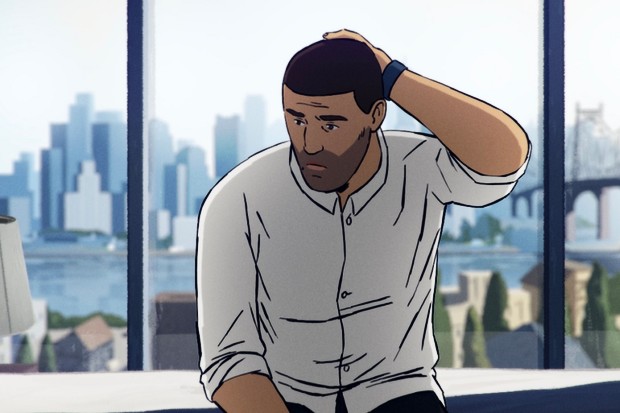Throughout the documentary Flee, film director Jonas Poher Ramussen draws a contrast between a factual story narrated by Amin Nawabi on his experience of being displaced from his homeland with his family, and a fabricated story that details a narrative that would allow him to be accepted as a refugee.
Ramussen makes a stylistic choice as a director to allow the viewer to believe this fabricated story that Nawabi tells to draw sympathy for the protagonist early on. As he opens the book found in his storage room, Nawabi tells the viewer that once the Islamic guerilla fighters known as the “Mujaheddin” took over Afghanistan, they had killed his father, mother, brother, and kidnapped his sister.

This narrative played out until the true story was revealed on how his family made it to Moscow with the help of his older brother that lived in Sweden. Although this alteration of facts or details in his journey slightly changed my impression of his experience, both stories were purposeful in their own way. Although the fabricated story of being an orphan misled me as a viewer, it functioned as a standard that was eligible to earn him refuge in Copenhagen. Furthermore, just because this story was fabricated, it does not in any means depreciate the value that can be gained from the actual experiences that Nawabi went through. If anything, as a viewer I was more emotionally moved about how Nawabi detailed the many attempts it took to finally get him to Sweden.
Specifically, the sequence that moved me and had me replay the scene a few times was during Nawabi’s failed journey to Sweden with his mom and brother. During the bleak and frigid walk of the displaced refugees through the snowy woods of Russia, an elderly woman had grown weary and physically could not continue the walking path alongside her son. Under a time constraint, the cold-blooded smuggler threatened to kill the elder or leave her behind because she was slowing down the group of refugees. In an instant, as if it were instinctual, three more men of the group went back to the elderly woman, placed her on a blanket and carried her along the journey when her physicality failed to do so.

The inclusion of this scene by Ramussen tapped into my sense of compassion as a viewer. Although it is unclear, it seemed that despite the men not even knowing this elderly woman, they felt it was their duty to carry her to refuge. There are several underlying ideas that the director of this documentary wanted to convey when displaying this relationship between the men and elderly woman. The most prominent of those ideas and the one that ties it all together must be the sense of community particularly in this scene. It effectively displayed the collective mindset that these displaced individuals had, which is the need to find refuge after being forced to leave their own homes. Although they might be from different towns, cities, or even countries, the unity seen in this sequence really ties together the fact that the entire group all had the same collective purpose when trying to be smuggled. They simply wanted to find a better place to call home.
The director wants to appeal to the viewer’s emotions by showing the great lengths that refugees must go to in order to make do with their traumatic situation of their homeland. Ramussen exposes the reader to both forms of the story to bring awareness to the identity crisis that refugees must endure. Nawabi mentioned that the smuggler had great power over him because he chose what Nawabi can allow his identity to be in the public. The fact that Nawabi details his experience as being forced to change who and what he is because it would allow him to be able to seek refuge is simply an injustice to humanity. The documentary sheds light upon the immoral process that refugees must go through, and it brings a sense of anger and frustration to me as viewer.
Ultimately, this documentary changed my understanding of the experiences of refugees and showed me the identity crisis that many have to face. There shouldn’t be a need for pseudonyms like “Nawabi” but instead transparency in this process of helping individuals find a new place to call home.








